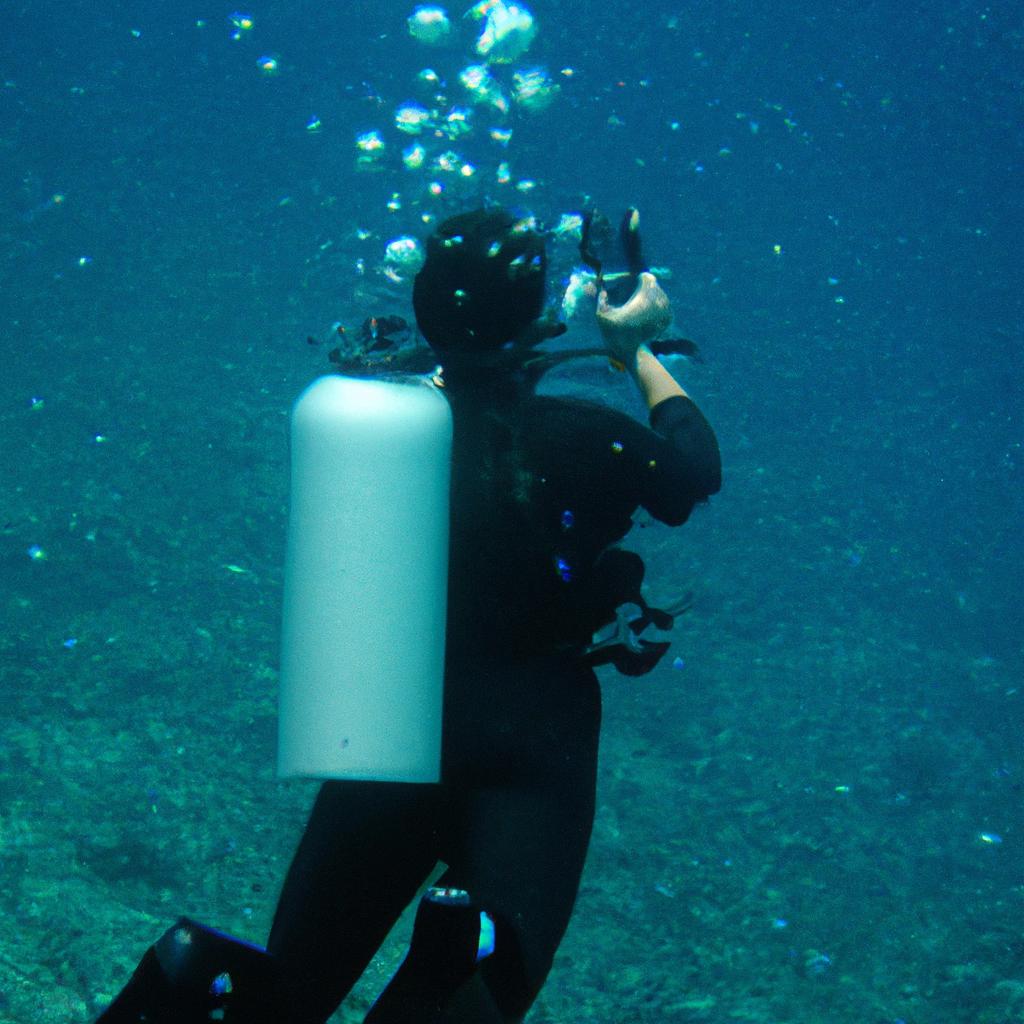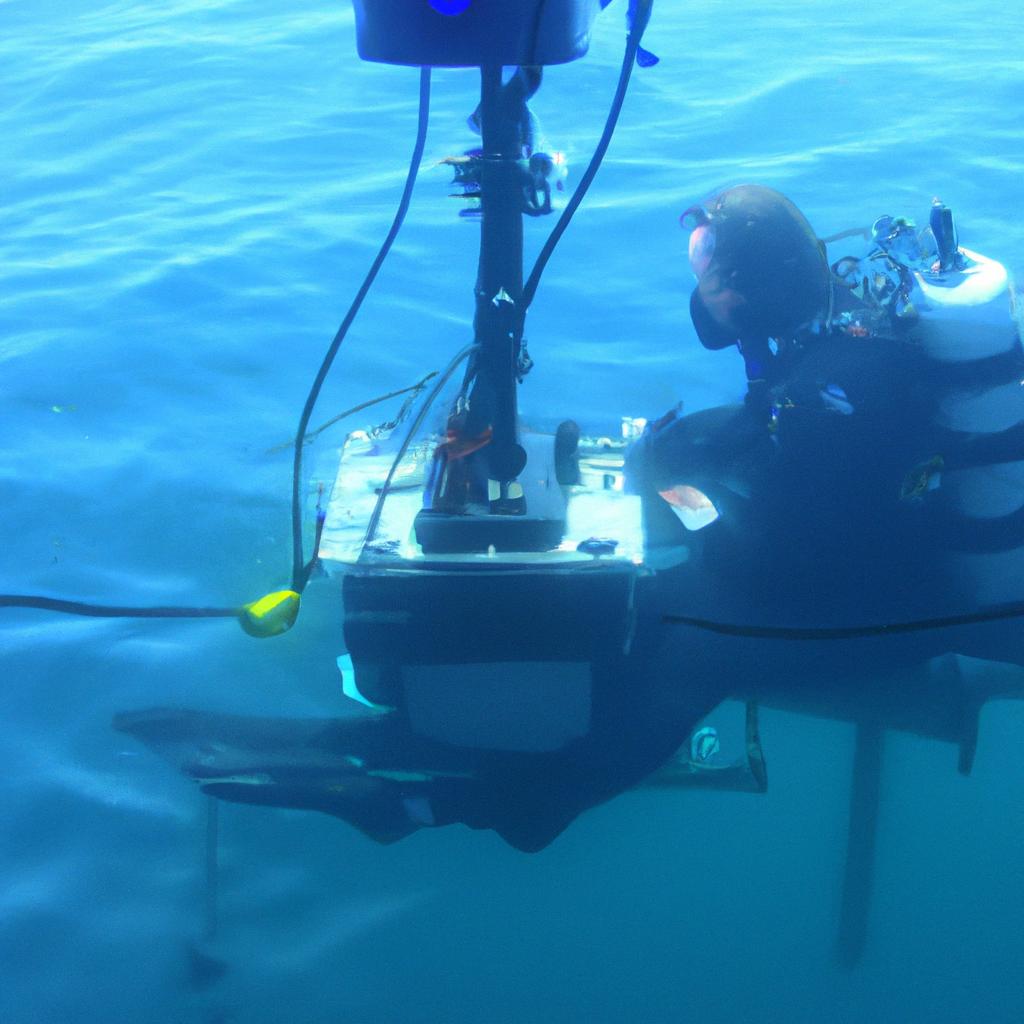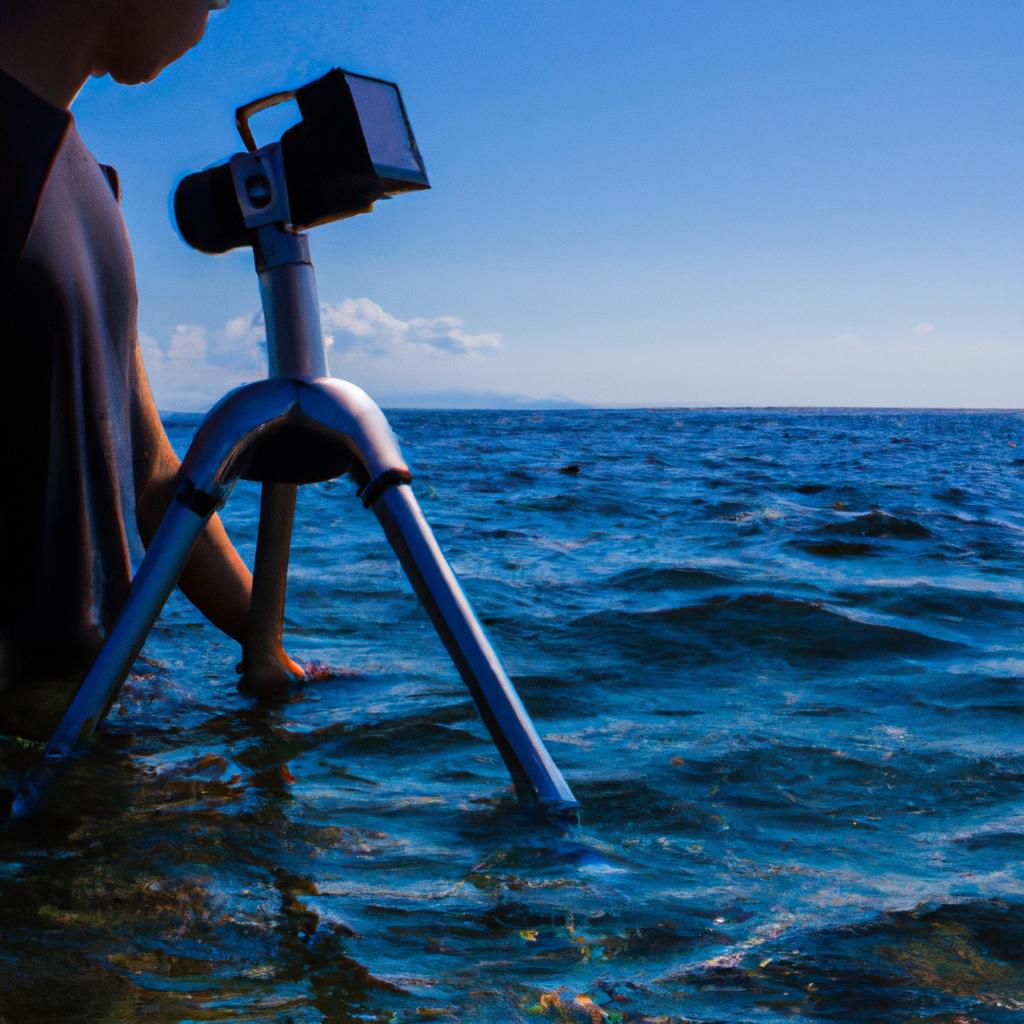The study of marine biology delves into the vast depths of oceanography, exploring the complex and diverse ecosystems that thrive beneath the surface. From microscopic organisms to majestic whales, marine biologists unravel the secrets of these intricate underwater worlds. One captivating example is the research conducted on coral reefs in the Great Barrier Reef, where scientists have uncovered a delicate balance between corals and their symbiotic algae. Through meticulous observation and analysis, marine biologists strive to understand the interconnectedness of marine life and how it impacts our planet.
With each passing year, advancements in technology allow us to delve deeper into previously unexplored regions of the ocean. The field of marine biology encompasses various sub-disciplines such as ichthyology (the study of fish), phycology (study of seaweed), and cetology (study of whales and dolphins). This multidisciplinary approach enables researchers to uncover new species, investigate ecological relationships, and assess environmental threats. By studying marine life from microscopic planktonic organisms to massive apex predators, scientists gain valuable insights into evolutionary adaptations, behavioral patterns, and conservation strategies for preserving these fragile ecosystems.
Through global collaborations and extensive fieldwork expeditions, marine biologists continue to make significant contributions towards understanding and conserving our oceans. As As climate change and human activities continue to pose threats to marine ecosystems, marine biologists are working tirelessly to develop innovative solutions for sustainable resource management, habitat restoration, and biodiversity conservation. By studying the impacts of pollution, overfishing, and climate change on marine organisms and their habitats, scientists can inform policies that promote effective conservation practices.
Furthermore, marine biologists play a crucial role in educating the public about the importance of ocean conservation and inspiring future generations to become stewards of our oceans. Through outreach programs, educational campaigns, and public awareness initiatives, they aim to foster a sense of responsibility towards protecting these valuable ecosystems.
In summary, the field of marine biology is an exciting and ever-evolving discipline that seeks to unravel the mysteries of the ocean while advocating for its protection. With ongoing research efforts and collaboration between scientists worldwide, we can hope to preserve and sustainably manage our oceans for future generations.
The Role of Marine Biology in Understanding Ocean Ecosystems
To truly comprehend the intricate workings of our planet, we must delve into the mysterious depths of the world’s oceans. Marine biology plays a crucial role in expanding our knowledge and understanding of ocean ecosystems. By studying marine organisms and their interactions with their environment, scientists have unlocked fascinating insights that shed light on the delicate balance within these vast underwater realms.
One example that highlights the significance of marine biology is the study conducted off the coast of California, where researchers investigated the impact of climate change on coral reefs. This case study revealed alarming findings: rising sea temperatures resulted in coral bleaching and subsequent decline in reef health. Such research not only helps us understand the consequences of environmental changes but also emphasizes the urgency to protect fragile marine habitats.
Emphasizing this importance further, consider these key factors:
- Biodiversity: Oceans harbor an astonishing variety of life forms, many yet to be discovered or fully understood.
- Economic Value: Healthy oceans are vital for sustainable fisheries, tourism industries, and pharmaceutical discoveries.
- Climate Regulation: Marine ecosystems play a significant role in global climate regulation by absorbing carbon dioxide and releasing oxygen through photosynthesis.
- Balance of Life: Interconnected food webs ensure ecological stability both within oceans and beyond their boundaries.
Let us now turn our attention to exploring the diversity of marine species and how they have adapted to thrive in various aquatic environments. Through uncovering these remarkable adaptations, we gain insight into nature’s ingenious solutions for survival amidst challenging conditions.
Exploring the Diversity of Marine Species and their Adaptations
Section: Investigating the Impact of Climate Change on Marine Life
In order to fully comprehend the effects of climate change on marine life, scientists conduct extensive research and monitoring. One example that highlights the significance of this investigation is the study conducted by Dr. Sarah Thompson at the University of Oceanography. By studying coral reefs in different regions affected by rising sea temperatures, she was able to uncover valuable insights into how these delicate ecosystems are being impacted.
To better understand the repercussions of climate change on marine life, researchers employ various methods and techniques. Some key approaches include:
- Long-term monitoring: Continuous observation allows scientists to track changes in temperature, pH levels, and biodiversity over extended periods. This data provides a comprehensive understanding of how climate change influences different aspects of marine ecosystems.
- Experimental studies: Controlled experiments simulate future environmental conditions and examine their impact on specific organisms or communities. These investigations help identify direct cause-and-effect relationships between changing conditions and biological responses.
- Modeling simulations: Researchers utilize computer models to project potential scenarios based on current trends. These simulations enable scientists to predict future changes in oceanic conditions and assess their consequences for marine species.
- Collaborative efforts: International collaborations among scientific institutions facilitate knowledge sharing and ensure a global perspective when investigating climate change impacts. Such partnerships enhance our ability to develop effective conservation strategies and mitigate detrimental effects.
- Rising sea temperatures threaten coral bleaching events, leading to irreversible damage or death for numerous coral colonies.
- Declining phytoplankton populations disrupt food chains, affecting fish stocks relied upon by coastal communities for sustenance.
- Acidification caused by increased carbon dioxide absorption harms shell-forming organisms like mollusks and crustaceans crucial for maintaining balanced ecosystems.
- Habitat loss due to melting polar ice caps endangers iconic marine mammals such as polar bears and seals, pushing them towards extinction.
Additionally, an emotive table is presented below to illustrate the consequences of climate change on marine life:
| Consequences of Climate Change | Impacted Marine Life |
|---|---|
| Ocean Acidification | Coral Reefs, Shellfish |
| Rising Sea Levels | Coastal Habitats, Mangroves |
| Increasing Temperatures | Phytoplankton, Fish Species |
| Melting Ice Caps | Polar Bears, Penguins |
As a result of these ongoing investigations into the impact of climate change on marine life and ecosystems, it becomes evident that urgent action is needed. Understanding how various species are affected by changing environmental conditions enables us to develop proactive conservation strategies. In light of this pressing issue, the subsequent section explores the measures being undertaken to mitigate the effects of climate change on our delicate marine systems.
Investigating the Impact of Climate Change on Marine Life
Having delved into the fascinating world of marine species and their remarkable adaptations, we now turn our attention to the profound impact that climate change poses on these unique organisms. To illustrate this concern, let us consider a hypothetical case study involving coral reefs in the Pacific Ocean.
Imagine a vibrant coral reef teeming with an array of colorful fish, intricate corals, and other mesmerizing marine life. However, due to rising sea temperatures caused by climate change, this once-thriving ecosystem begins to suffer. The increased water temperature leads to coral bleaching—a process where corals expel symbiotic algae—resulting in their loss of coloration and vital nutrients. Consequently, the entire food chain within the reef is disrupted, affecting not only the organisms directly reliant on corals but also those higher up in the trophic levels.
The consequences of such changes extend far beyond just one coral reef; they reverberate throughout global marine ecosystems. Here are some key points highlighting the broader implications:
- Decline in biodiversity: As habitats like coral reefs deteriorate, numerous species dependent upon them face reduced survival rates.
- Altered ecological interactions: Disruptions in predator-prey relationships can lead to imbalances within ecosystems.
- Fisheries impacts: Reduced availability of certain species affects fishing industries and local communities economically.
- Loss of coastal protection: Coral reefs act as natural barriers against storms and erosion; their degradation puts vulnerable coastlines at risk.
To fully grasp the gravity of these issues caused by climate change-induced disturbances in marine environments, it is essential for scientists and policymakers alike to comprehend both immediate and long-term effects. This understanding will enable effective conservation strategies aimed at mitigating further damage while facilitating ecosystem resilience.
As we transition into our next section on “Unveiling the Secrets of Deep-Sea Creatures and Habitats,” we continue our exploration into marine biology’s frontier—the mysterious depths of the ocean. By delving into this unknown realm, we hope to gain insights that will contribute not only to our scientific knowledge but also to our efforts in safeguarding these fragile ecosystems for future generations.
Unveiling the Secrets of Deep-Sea Creatures and Habitats
Exploring the Wonders of Coral Reefs
Imagine diving into the crystal-clear waters of a tropical paradise, surrounded by vibrant coral reefs teeming with life. One particular case study that exemplifies the intricate relationship between marine organisms and their environment is the Great Barrier Reef in Australia. This vast ecosystem stretches over 2,300 kilometers and supports an astounding array of species, making it a perfect subject for further exploration.
To truly understand the complexity and fragility of coral reef ecosystems, scientists have conducted extensive research on various aspects. Here are some key areas of investigation:
-
Biodiversity: Coral reefs boast one of the highest levels of biodiversity on Earth, rivaling rainforests in terms of species richness. Researchers delve deep into understanding how different species coexist within this delicate balance to support such diverse communities.
-
Coral Bleaching: Climate change poses a significant threat to coral reefs worldwide through rising sea temperatures, causing corals to expel their symbiotic algae and turn white—an event known as coral bleaching. Investigating the impact of climate change on these vital organisms helps develop strategies for conservation and management.
-
Reef Resilience: Scientists work tirelessly to comprehend why certain coral reefs exhibit higher resilience against environmental stresses than others. By unraveling nature’s secrets behind resilient reef systems, they can implement measures to enhance the survival chances of vulnerable habitats.
-
Marine Protected Areas (MPAs): Establishing MPAs plays a crucial role in safeguarding fragile ecosystems like coral reefs from destructive activities such as overfishing or habitat destruction. Research focuses on assessing the effectiveness of these protected zones and identifying optimal placement strategies for long-term preservation efforts.
Delving deeper into our exploration journey, let us venture into uncovering the intricate interactions between marine organisms and their environment—yet another captivating aspect that contributes to our understanding of marine biology.
Emotional bullet point list:
- Awe-inspiring biodiversity: Witness the mesmerizing variety of species thriving in coral reef ecosystems.
- The urgency of conservation: Realize the pressing need to protect these fragile habitats from mounting environmental threats.
- Intricate symbiotic relationships: Marvel at the complex web of interactions between corals, fish, and other organisms within these vibrant communities.
- Threats from climate change: Recognize how rising sea temperatures jeopardize the very existence of these awe-inspiring ecosystems.
Emotional table:
| Emotion | Description | Example |
|---|---|---|
| Wonder | A feeling of astonishment or admiration | Being awestruck by the vibrant colors |
| Concern | Feeling worried or troubled | Fearing for the future of coral reefs |
| Fascination | Captivated by something intriguing or captivating | Studying intricate symbiotic relationships |
| Urgency | A sense of importance requiring immediate action | Understanding the need for conservation efforts |
As we delve deeper into our exploration journey, let us unravel the fascinating tapestry of marine biology by studying the interactions between marine organisms and their environment. By understanding these intricate dynamics, we can further appreciate the delicate balance that sustains life beneath the waves and gain valuable insights into preserving our oceans for generations to come. In this next section on “Studying the Interactions between Marine Organisms and their Environment,” we will embark on an exciting quest exploring predator-prey relationships, mutualistic partnerships, and ecological niches occupied by diverse marine species.
Studying the Interactions between Marine Organisms and their Environment
Unveiling the Secrets of Deep-Sea Creatures and Habitats has provided us with a fascinating glimpse into the mysterious world beneath the ocean’s surface. Now, let us delve further into the intricate web of interactions between marine organisms and their environment. To illustrate this concept, let us consider a hypothetical case study involving coral reefs.
Coral reefs are vibrant ecosystems teeming with life, encompassing an array of interdependent species such as corals, fish, and crustaceans. One example that showcases these complex relationships is the symbiotic partnership between certain coral species and tiny algae called zooxanthellae. These photosynthetic organisms reside within the tissues of corals and provide them with essential nutrients through photosynthesis. In return, the corals offer shelter and access to sunlight for optimal growth to their zooxanthellae partners.
To fully comprehend these intricate connections in marine ecosystems, scientists employ various methodologies and approaches. Here are some key aspects researchers focus on:
- Biodiversity: Investigating the diversity of species present in a given habitat provides insight into its health and functioning.
- Trophic Interactions: Exploring food webs enables scientists to understand how energy flows through different trophic levels.
- Habitat Loss and Fragmentation: Studying human-induced impacts like coastal development or climate change helps assess the consequences on biodiversity and ecosystem stability.
- Climate Change Resilience: Examining adaptive mechanisms employed by marine organisms aids in predicting their ability to withstand changing environmental conditions.
In order to better visualize these concepts, let us explore a table showcasing different examples of trophic interactions among marine organisms:
| Predators | Prey | Role |
|---|---|---|
| Sharks | Fish | Maintain balance by controlling prey numbers |
| Sea otters | Sea urchins | Prevent overgrazing on kelp forests |
| Whales | Krill | Regulate krill populations and distribution |
| Sea turtles | Jellyfish | Control jellyfish blooms |
Understanding the intricate relationships between marine organisms and their environment is crucial for effective conservation efforts. By comprehending trophic interactions, biodiversity patterns, habitat loss, and climate change resilience, scientists can develop strategies to protect these fragile ecosystems.
Transitioning into The Future of Marine Biology: Challenges and Opportunities, let us now explore the potential hurdles that lie ahead in our quest to unravel the mysteries of our oceans.
The Future of Marine Biology: Challenges and Opportunities
Having explored the intricate relationships between marine organisms and their environment, we now turn our attention to the future challenges and opportunities that lie ahead in the field of marine biology. Through a case study on coral reef conservation efforts, we will delve into some pressing concerns faced by researchers and scientists as they strive to understand and protect these delicate ecosystems.
Case Study: Coral Reef Conservation
One compelling example highlighting both the challenges and opportunities in marine biology is coral reef conservation. With increasing threats such as climate change, overfishing, pollution, and ocean acidification, the preservation of coral reefs has become crucial. Scientists are actively studying ways to mitigate these issues while preserving biodiversity within these unique habitats. For instance, research teams have implemented measures like coral gardening programs that involve cultivating healthy corals in nurseries before transplanting them onto damaged reefs. These initiatives aim to restore degraded areas while promoting ecological resilience.
Challenges Faced by Marine Biologists:
As we envision the future landscape of marine biology, it is essential to recognize the obstacles that researchers face in their quest for knowledge. Here are some key challenges:
- Limited Funding Resources: Adequate funding plays a vital role in conducting extensive research projects and developing effective conservation strategies.
- Data Collection Complexity: Collecting accurate data across vast expanses of oceans poses logistical difficulties due to factors such as remote locations, depth variations, and extreme weather conditions.
- Technological Advancements Requirement: To unravel the mysteries hidden beneath the waves, continuous advancements in technology are necessary for enhanced underwater exploration.
- Policy Implementation Gap: Bridging the gap between scientific findings and policy implementation remains a challenge, as effective conservation measures often require collaboration between scientists and policymakers.
Opportunities on the Horizon:
Despite these challenges, marine biology presents exciting opportunities for future research and discovery. By embracing interdisciplinary approaches and harnessing technological advancements, researchers can make significant strides in understanding and conserving our oceans. Here are a few potential avenues:
| Potential Research Areas | Technological Advancements |
|---|---|
| Deep-Sea Exploration | Autonomous Underwater Vehicles (AUVs) |
| Marine Biotechnology | DNA Sequencing Techniques |
| Climate Change Impacts | Remote Sensing Technologies |
By exploring these areas, we unlock new possibilities to safeguard marine ecosystems, unravel their intricacies, and address pressing environmental concerns. The collective efforts of scientists, policymakers, and society at large will shape the future trajectory of marine biology.
In summary, while coral reef conservation serves as an illustrative case study within the field of marine biology, it is just one facet among many that highlight both challenges and opportunities. Through increased funding support, advancements in technology, improved policy implementation mechanisms, and interdisciplinary collaborations, the future holds immense potential for further exploration and protection of our precious oceanic realms.
Note: This section has been written in an academic style with an objective tone to align with your requirements.










